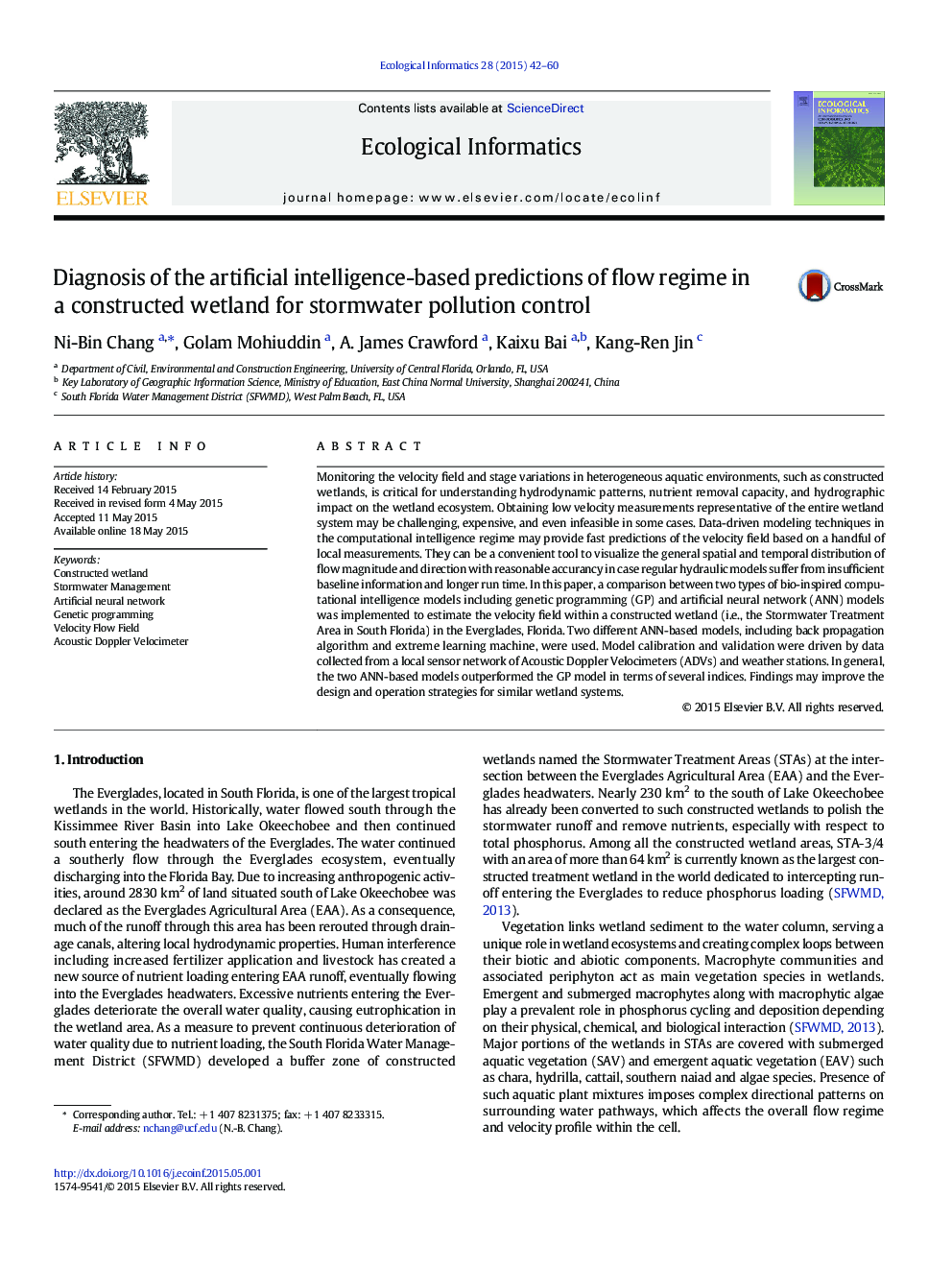| Article ID | Journal | Published Year | Pages | File Type |
|---|---|---|---|---|
| 4374816 | Ecological Informatics | 2015 | 19 Pages |
•Constructed wetland cannot remove enough total phosphorus in the Everglades.•Artificial intelligence models provide penetrating insight for wetland management.•Retrofit of wetlands can help improve the compliance for water quality management regulation.
Monitoring the velocity field and stage variations in heterogeneous aquatic environments, such as constructed wetlands, is critical for understanding hydrodynamic patterns, nutrient removal capacity, and hydrographic impact on the wetland ecosystem. Obtaining low velocity measurements representative of the entire wetland system may be challenging, expensive, and even infeasible in some cases. Data-driven modeling techniques in the computational intelligence regime may provide fast predictions of the velocity field based on a handful of local measurements. They can be a convenient tool to visualize the general spatial and temporal distribution of flow magnitude and direction with reasonable accurancy in case regular hydraulic models suffer from insufficient baseline information and longer run time. In this paper, a comparison between two types of bio-inspired computational intelligence models including genetic programming (GP) and artificial neural network (ANN) models was implemented to estimate the velocity field within a constructed wetland (i.e., the Stormwater Treatment Area in South Florida) in the Everglades, Florida. Two different ANN-based models, including back propagation algorithm and extreme learning machine, were used. Model calibration and validation were driven by data collected from a local sensor network of Acoustic Doppler Velocimeters (ADVs) and weather stations. In general, the two ANN-based models outperformed the GP model in terms of several indices. Findings may improve the design and operation strategies for similar wetland systems.
